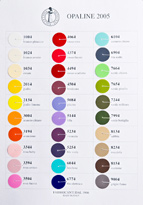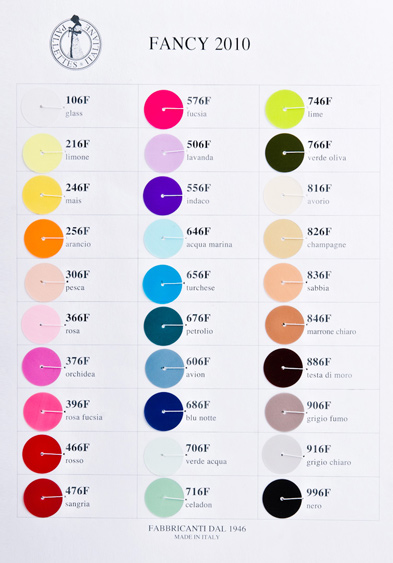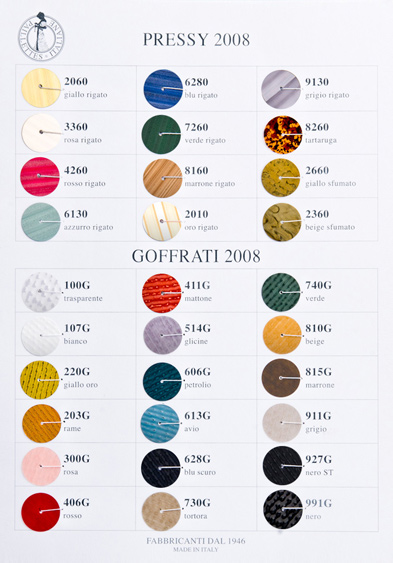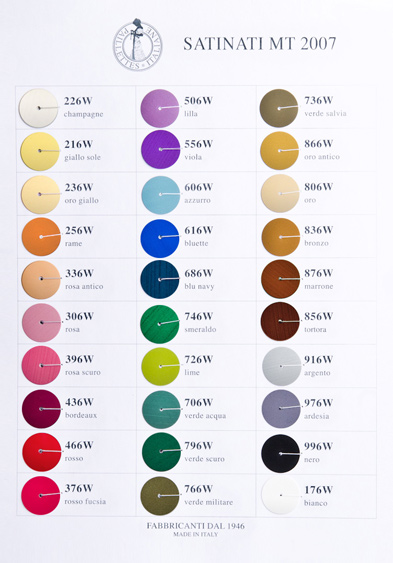-
Almost 70 years dedicated entirely to sequins
During the Nineteenth century the Bilics clan, a typical Austro Hungarian family of high standing, become a dynasty of creative and innovative globetrotters. This explains in part, the success over the years of such a singular and niche entrepreneurial activity such as sequin manufacturing. It all begins in Budafok a neighbourhood located on the southern outskirts of the Magyar Capital; the collapse of the Empire, the great crisis of 1929 as well as their father’s passion for lion hunting – lead the siblings Andrea, Lazlo, Maria & Elisabetta to Cairo where the two brothers respectively work on the lighting project of the Pyramids and participate in building the Suez Canal.
-
the first factory in Milan
The two sisters on the other hand are involved in the manufacturing of products for hairstylists and beauty salons. The next stop, but only for Andrea, is Paris where he learns the secrets of the trade in the only company that at the time actually produces sequins and he decides to set up his own business. In 1946 he opens a factory in Milan in the Bovisa neighbourhood: the raw material used is isinglass.
-
The sequin Dolce Vita
The world is in a state of ferment, the economic growth is the engine behind the good life full of indulgence & pleasure and sequins are continually in high demand whatever the season. They are in point of fact the symbol of sophistication and are the perfect mouldable tool for the creative whims of the very first Designers. Andrea is in charge of production, which is almost entirely hand crafted and he improves the colouring and cutting methods, designing the machines himself. While the contacts with the fashion houses, and the theatre and film industry are Margherita’s responsibility. The company soon becomes a household name for all the industry’s professionals that come to appreciate the strong specialized know how and the family management of the business.
-
The advent of plastic
The 60’s represent one of the highest production peaks the company has ever experienced, also thanks to Zoltan Koreny, Marhgerita’s husband who introduces a brand new material; plastic (cellulose acetate). This new material is pliable, more resilient, and amazingly shiny. The introduction of plastic allows the use of new pigments that gives hues and colours that until then had been impossible to achieve. In addition to this extraordinary novelty, the other two siblings, Maria and Lazlo decide to join the company on a permanent basis. Lazlo up until then had dedicated his time to the production of “Venus” hair curlers that he had invented together with his wife Maria Rosa who also decides to work full time in the family business.
-
Cormano and Melbourne
When the other two brothers and Maria Rosa join the company, the original founders decide to explore other paths: Andrea relocates to Boston, Margherita and Zoltan move to Ottawa in Canada. Whereas Maria, in 1986, moves to Australia where she establishes Maria George Pty Ltd, an import/export company specialised in products for fashion and entertainment world, and of course sequins are one of the key products. In the two decades that follow Lazlo’s intuition and the charismatic management by Maria Rosa bring a substantial growth to production, also thanks to the strong relationships built up with Italian and French designers (at the time all the contracts and agreements were signed in the sitting room while eating delicacies, having a chat and a drink) and the ability – so typical of the family – to bring innovation by anticipating market requests. The company employs almost 100 people and has clients in all 5 continents.
-
The new generation
After a natural drop in the mid Eighties, the Company takes off again thanks to Lazlo and Maria Rosa’s two children, Andrea and Margherita, the two founders’ namesakes. Just as in the past it is Andrea who takes charge of innovating and optimizing the production of sequins: he designs and personally builds the cutting and colouring machines. Margherita is in charge of the clients and works very closely with the creative team and handles the sales relations. The company introduces sequinned fabrics, which are all computerized machine embroidered on the basis of the clients’ own designs. Polyester replaces cellulose acetate: it’s less shiny and transparent but it’s stronger and more resilient.
-
Sequins become washable
Andrea Bilics, a botanist who for many years was responsible for Milan’s green areas, seems to have inherited his grandfather’s inventive gene. His grandfather was also an agronomist and before the Great War found a remedy for phylloxera. The Chamber of Commerce awards Andrea with a prize for his inventions, and we owe metallic colours, scratch, tear and water resistant sequins to his insight, as well as the patent for washable sequins that can be pressed.
-
The future of the company
All these technical innovations lead to a huge increase in production and enable the company to manufacture sequins as small as 2mm (sold on bobbins and attached using computerized embroidery machines). In the last few years his son Mattia has joined the company (his second name is Andrea, of course) and he has the important task to make this delightful tale, which has the ability to continually renew itself yet never lose sight of the importance to aim for excellence, last well into the future.
Written by Federico Meda / www.handemade.it






















